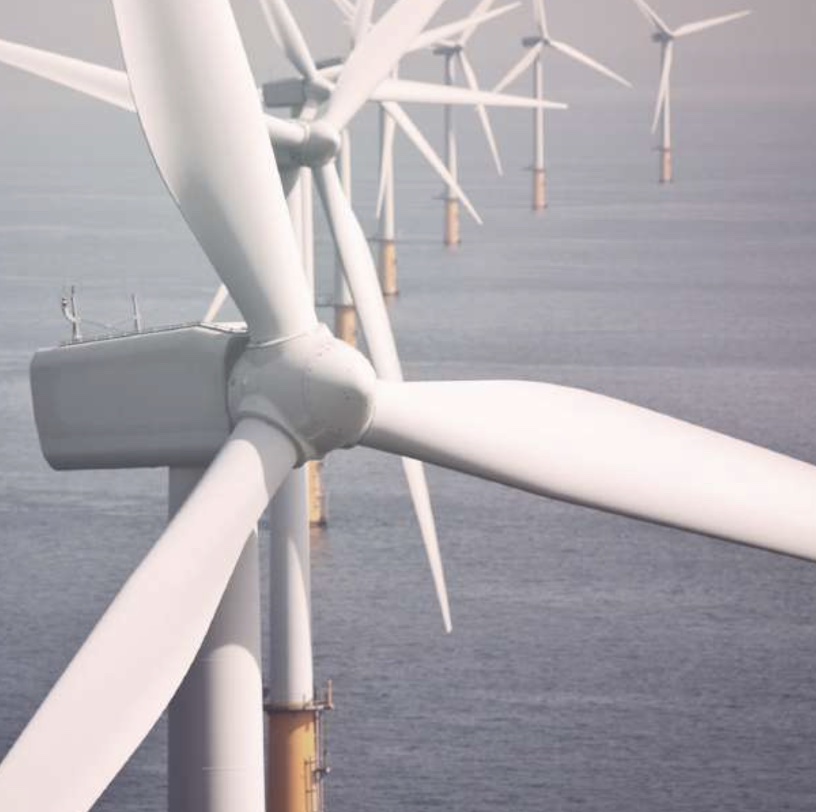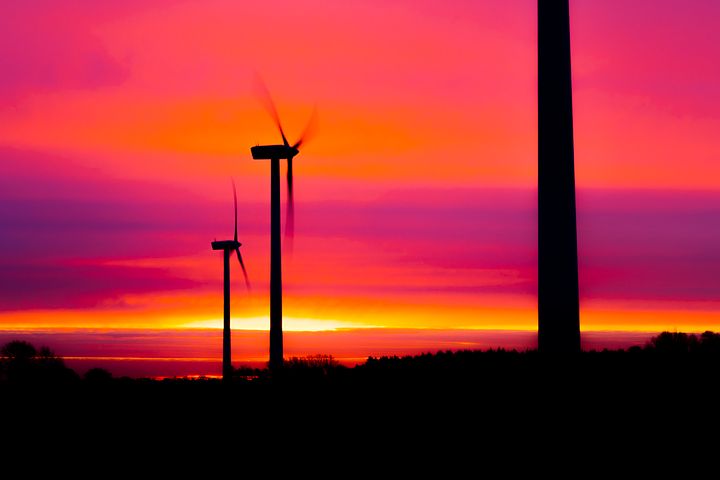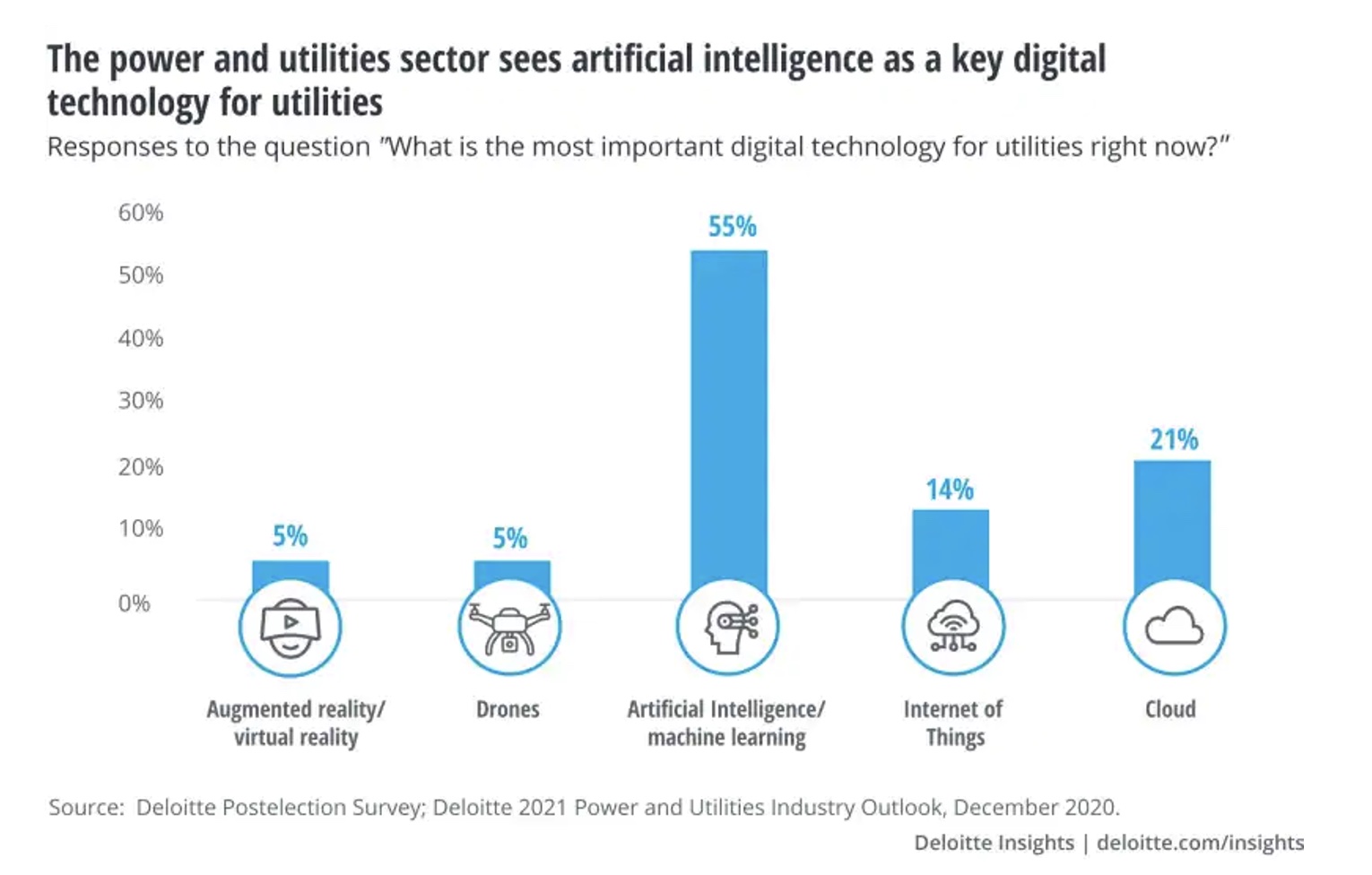Wind Power and Artificial Intelligence: A Sustainable Partnership
Last November 13th, the COP26 conference in Glasgow, Scotland concluded with the 197 participant nations (just barely) agreeing to continue pursuing the commitments that emerged from the 2015 Paris agreement - specifically, the goal of limiting global climate change induced temperature increases to 1.5℃. A significant driver of achieving that ambitious goal will be dramatic reductions in fossil fuel usage and associated increases in the implementation of renewable power sources; in particular, wind power, both onshore and off. And while the pace of wind power installations has risen dramatically in recent years, with a concomitant fall in per-MW generation costs, the challenge of keeping wind turbines operating efficiently with minimal O&M spend throughout their asset lifetimes, is never-ending. Artificial intelligence (AI) and machine learning (ML) technologies are uniquely poised to provide the extra "lift" that these expensive and complex systems need to deliver on the promise of renewable energy.
 In 2020, wind power supplied nearly 1600 TWh of electricity, (about 5 percent of the world's total). Despite wind's recent expansion, numerous factors impede an even faster growth rate, including fossil fuel subsidies, manufacturing supply chain issues, and the politics of not-in-my-backyard (NIMBY) syndrome. But there is an equally daunting challenge to that of installing new turbines, and that is efficiently maintaining and operating the 350,000 or so that are already up and running.
In 2020, wind power supplied nearly 1600 TWh of electricity, (about 5 percent of the world's total). Despite wind's recent expansion, numerous factors impede an even faster growth rate, including fossil fuel subsidies, manufacturing supply chain issues, and the politics of not-in-my-backyard (NIMBY) syndrome. But there is an equally daunting challenge to that of installing new turbines, and that is efficiently maintaining and operating the 350,000 or so that are already up and running.
While the technology is itself relatively mature and well understood, additional difficulties arise simply due to the environments in which turbines operate. Whether in the vast plains of west Texas or off the coast of England in the North Sea, equipment is subjected to hostile settings; offshore wind, which is difficult to access with maintenance personnel and equipment, emphasizes the challenge of clearly understanding how these complex systems are operating, and knowing (as far in advance as possible) when malfunctions are likely to occur.
This is where artificial intelligence (AI) and machine learning (ML) enter the picture. AI has reached a point where it does a lot of things very well. But the primary thing it does well is to ingest immense quantities of performance data on complex technological assets and then apply ML algorithms to predict (with remarkable prescience) when systems will require maintenance or when they are, in fact, on the verge of failing. This level of insight provides asset owners and maintenance personnel the sort of advance notice that can turn a catastrophic equipment failure into a routine - and profoundly less expensive - maintenance task.
Lest we limit our thinking to the minimization of maintenance costs, it's important to point out that there is a top-line impact in play here as well. Wind turbines that operate at suboptimal levels not only break down more frequently, they also run less efficiently day-to-day, producing less power and generating less revenue. Further, utilizing AI-based insights to optimally position blade angles for local wind conditions (for example), and even predict future power output levels based on weather forecasts and historical turbine performance data, helps to ensure that operators extract the greatest possible value from their fleet. Fossil power advocates routinely talk up the predictability of their baseload generation assets. AI significantly contributes to enhancing the predictability of wind turbine generation as well. These advanced capabilities, combined with the operational cost benefits provided by predictive maintenance, make efficient reliable wind turbine operation a top- and bottom-line concern.

Make no mistake: AI implementation, while rife with opportunity, is a challenging undertaking that requires expertise and executive focus. The good news is that the raw ingredient--historical and real-time performance data--already exists in abundance, whether or not turbine operators make any meaningful use of it. Modern wind turbines pump out copious amounts of second-by-second data on power curve efficiency, bearing temperatures, pitch control systems, gearboxes, and a host of other asset components. AI systems then aggregate all of this data, apply ML algorithms, and render predictive warnings about equipment that's in need of maintenance, or perhaps at risk of outright failure. And because ML systems learn more about normal turbine operation (which varies from one unit to the next) with each passing day, the algorithms can not only predict failure, they can also save money by reducing routine but ultimately unnecessary maintenance activities.
 Finally, there are ancillary, but equally important, benefits that accrue to operators who effectively apply AI-based techniques to their wind power assets. Because wind turbines are a rapidly growing component in the broader electricity infrastructure of a nation, they are an increasingly tempting target for cyberattacks, which can result in lengthy and widespread blackouts, loss of manufacturing productivity, and compromised safety. A number of current AI-based solutions are capable of reducing this threat to near zero using a variety of endpoint protection algorithms. And, because the first step in understanding and dealing proactively with operational problems is being aware of them, AI-driven performance dashboards can arm users with immensely enhanced levels of visibility into performance data and trending.
Finally, there are ancillary, but equally important, benefits that accrue to operators who effectively apply AI-based techniques to their wind power assets. Because wind turbines are a rapidly growing component in the broader electricity infrastructure of a nation, they are an increasingly tempting target for cyberattacks, which can result in lengthy and widespread blackouts, loss of manufacturing productivity, and compromised safety. A number of current AI-based solutions are capable of reducing this threat to near zero using a variety of endpoint protection algorithms. And, because the first step in understanding and dealing proactively with operational problems is being aware of them, AI-driven performance dashboards can arm users with immensely enhanced levels of visibility into performance data and trending.
A recent Deloitte survey showed the clear focus of power industry executives on the use of AI as a key technology for implementation either now or in the very near future. However, Bain & Company recently found that fewer than 5 percent of digital transformation initiatives ultimately achieve or exceed their objectives. This clearly reinforces the importance of not only leveraging available performance data to the greatest extent possible, but doing so in a way that is focused on the highest impact operational opportunities. Although it is unclear whether COP27 (scheduled for November of this year in Sharm el-Sheikh, Egypt) will generate any more positivity than what emerged from Glasgow, renewable technologies such as wind and solar--augmented by the fast-growing power of artificial intelligence--will remain critical tools in the fight against climate change.
Sandeep Gupta, Vice President, Product and Strategy, Renewables for SparkCognition, which leverages AI to increase production, reduce costs and improve operational efficiency of renewable assets.
SparkCognition | www.sparkcognition.com
Author: Sandeep Gupta
Volume: 2022 January/February








